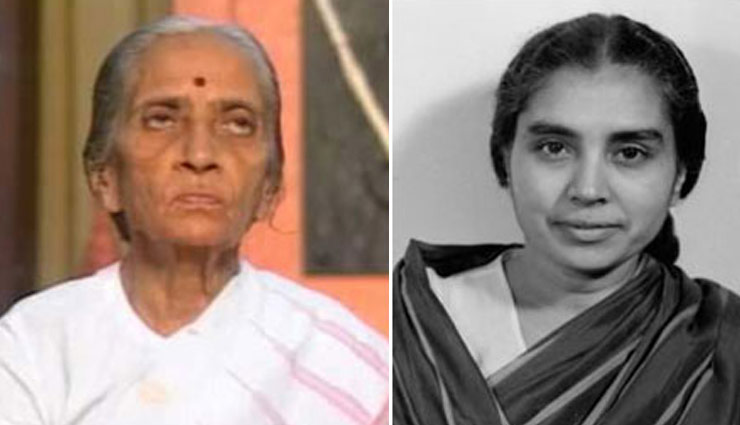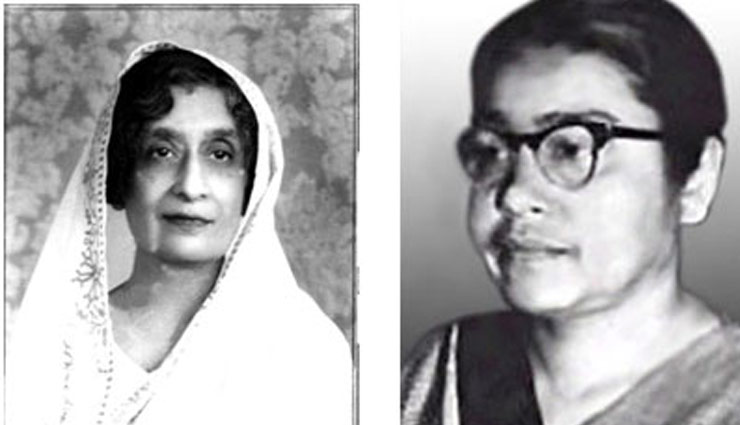Story Of Women's Who Participated In Quit India Movement
By: Priyanka Maheshwari Wed, 08 Aug 2018 3:53:18

“When the history of India’s fight for independence comes to be written, the sacrifice made by the women of India will occupy the foremost place.” -- Mahatma Gandhi.
New Delhi: It’s been 76 years since Quit India Movement was launched. On 8 August 1942 at the All-India Congress Committee session in Bombay, Mohandas Karamchand Gandhi launched the 'Quit India' movement. The next day, Gandhi, Jawaharlal Nehru and many other leaders of the Indian National Congress were arrested by the British Government. Massive demonstrations took place throughout the country in the following days. The Quit India movement or the Revolt of 1942 or ‘August Revolution’ of 1942 was the most popular and powerful mass movement in the series of agitations led by Gandhi in the course of freedom struggle. However, the significance of the ‘Quit India movement’ lay in the broadening of his support base to include peasants, students and the lower middle class.
An aspect of the movement that is rarely spoken about is the way it encouraged women to come out of the thresholds of their homes and raise their voice against British rule. Women’s participation in the Indian freedom struggle added to the legitimacy of the Indian freedom struggle. Their active participation not only changed their goals but also organized the activities. The political participation of women were equally approved and appreciated by men who otherwise want them to be perfect wives at home. The participation of women in the Quit India Movement of 1942 was significant from several aspects. The women of India, at large, were endowed with a new spirit on the call of Mahatma’s ‘do or die’.
A ‘leaderless movement’ and with majority of the men behind bars, women took to the streets, raising slogans, holding public lectures and demonstrations and even making and transporting explosives. Women were active throughout the movement.
There was direct involvement of women in the extremist activities. Huge numbers of women martyrs were listed in this movement. The struggle for Indian independence introduces Indian women to a new kind of liberation movement. A sense of responsibility and dedication towards one’s own country led them to organize and fight for achieving the ends. The role played by the women folk in the Quit India Movement of 1942 is a story of devotion, sacrifice and patriotism and it will go down in history as the most remarkable contribution towards the attainment of swaraj. There are few women whose contribution history can never forget.

* Usha Mehta
Bombay kept up the struggle through Radio. Usha Mehta was one of the prominent workers of the Congress Radio Conspiracy Case. Usha had a leaning towards the Congress session but this time when the famous Quit – India resolution was passed she was present and was a witness to this important decision. Usha Mehta, a committed patriot set up a radio transmitter, called the 'Voice of Freedom' to disseminate information about the war for freedom. News of protest and arrests, deeds of young nationalists and Gandhi's famous 'Do or Die' message for the Quit India movement were circulated amongst the masses. Usha and her brother persisted with their task of broadcasting until their arrest on November 12, 1942. Usha was sentenced to four years jail.
* Aruna Asaf Ali
Aruna has been an ardent soldier of the army of freedom fighters. She became prominent during the days of Salt Satyagraha. She went about addressing meetings, preparing salt and she also led processions. The Chief Commissioner of Delhi was greatly alarmed by her activities. As a consequence he prosecuted her not for sedition “but for being a vagrant having no ostensible means of livelihood.” She was asked to furnish security for good behavior, which she refused. Aruna was arrested and was sentenced to one year imprisonment. Soon after the arrest of the members of the Congress working Committee and other leaders on August 9, 1942, Aruna presided over the national flag hoisting ceremony at the Gowalia Tank Maidan, Bombay, and the site of the All India Congress Committee meeting. Aruna was one of the most important figures of the movement of 1942.She became a leader of the underground movement in 1942 and was forced to remain in hiding until 1946. During her three and a half years in hiding, Aruna was constantly in motion, urging people to liberate the land from foreign rule. Aruna published bulletins, participated in the independence movement, and went from place to place for her work. She was a prominent leader of the underground movement. Aruna edited Inquilab, a monthly journal of the Indian National Congress, Eastern Zone, along with Ram Manohar Lohia. She is widely remembered for having hoisted the national flag at Mumbai during the Quit India Movement.

* Sucheta Kriplani
Sucheta Kriplani’s interest in politics dated back from the days she was a lecturer in Banaras Hindu University in 1934. Her marriage to Acharya JB Kriplani, then General Secretary of the All India Congress, further accentuated her interest. She left her job in the Banaras Hindu University and plunge into political activities. Individual Satygraha was launched by the Congress in 1940 and she was one of the chosen ones who was permitted to take part in this Satyagraha and was arrested. She was prominent woman leader of the Quit India Movement though her tactics were far removed from those of Aruna Asaf Ali. She had started working in the Congress office in 1939 and in 1940 she was chosen to organize a women's department of the Indian National Congress. The women's department wanted to raise the political consciousness of women and identify Congress with social change that benefited women. Clearly this new department intended to co-opt the functions of the national women's organizations and place women under the control of the Indian National Congress. The women's department had hardly begun its work when Sucheta offered individual Satyagraha and was imprisoned for two years. She was out of prison when Congress leaders were arrested in 1942 and, hearing the news, decided to go into hiding. Sucheta's first job was to establish contact with groups still active throughout India and encourage them to continue non-violent activity. Wearing a variety of disguises, Sucheta travelled from province to province to keep leaders in touch with one another and help them plan activities. In 1944 she was captured and lodged in Lucknow jail as a 'dangerous prisoner.' Thus the involvement of women in the Quit India movement took different forms, from active protests to the organisation of non-violent movements.
* Sushila Nayyar
A doctor by profession. Sushila Nayyar was younger sister of Gandhi's secretary, Pyarelal. While studying at Lady Harding College, Delhi; she would visit Wardha ashram during vacations and contribute to the constructive programme. She became personal physician of Kasturba and Gandhi and accompanied them in their sojourns. Sushila was imprisoned with Kasturba, Gandhi and Mahadevbhai in Aga Khan Palace jail in 1942. After India attained independence, she took charge of the health minister. In Wardha, she started the Kasturba Memorial Hospital.
* Rajkumari Amrit Kaur
Rajkumari Amrit Kaur belonged to the royal family of Kapurthala State. She came under the influenced of Gandhi and became one of his followers. She participated in Salt Satyagraha and Quit India Movement. Her main fields of activity were female education and upliftment of the Harijans. She was president of All India Village Industries Association. During the movement Rajkumari Amrit Kaur played a leading role in organizing processions and protest meetings. Amrit Kaur was most active during the Quit India movement in 1942. She led processions day after day. One procession was subjected to ruthless lathi charge in Simla. From August 9 to 16 the processions led by her were subjected to lathi charge fifteen times. The Government could not let her be free and finally she was arrested at Kalka. There were many other women contributing towards the freedom movement. These women were not given much space on the pages of history, but without these women getting freedom was impossible.





